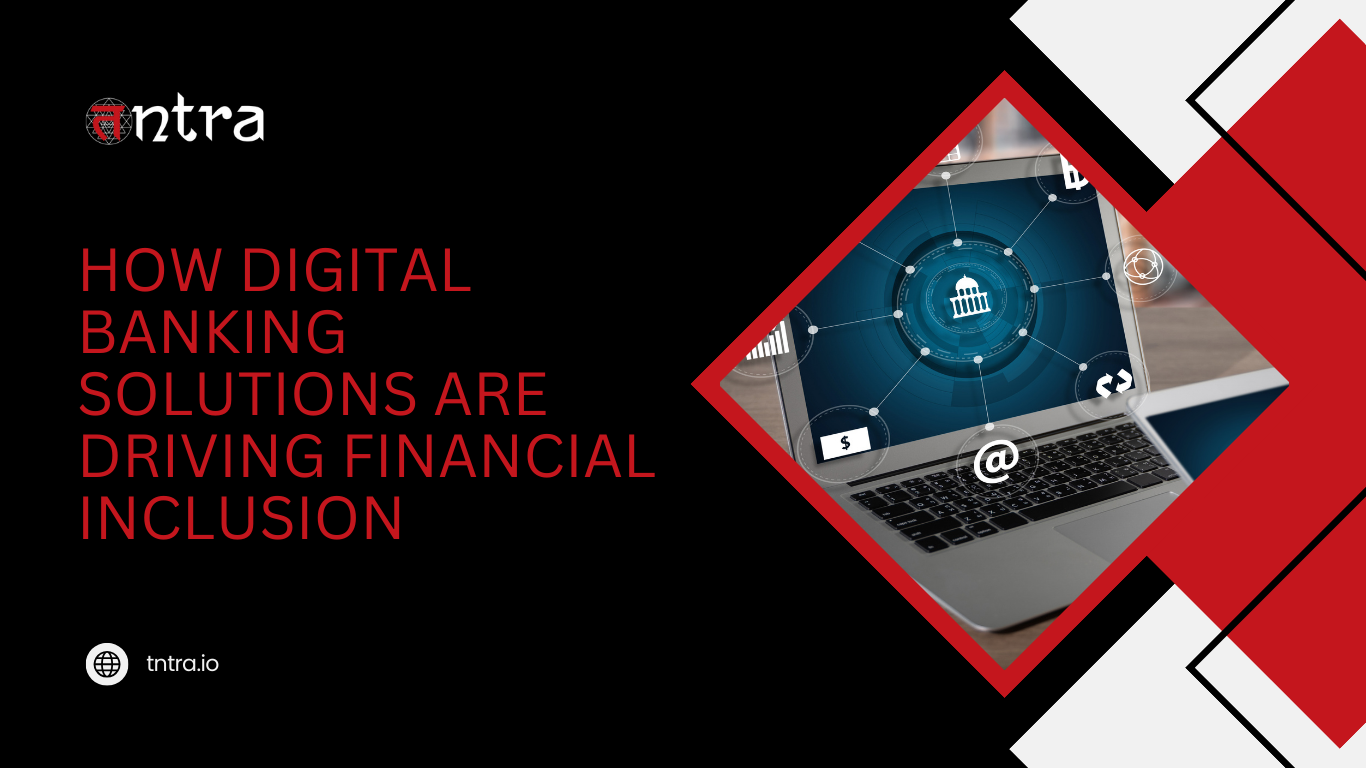In an era dominated by technological advancements, digital banking solutions have emerged as powerful tools for financial inclusion. The traditional banking system, brick-and-mortar branches, and paperwork-intensive processes often excluded a significant portion of the population, especially in developing countries. However, the rise of digital banking is changing the landscape, making financial services more accessible to unbanked and underserved populations. In this blog post, we will explore how digital banking solutions drive financial inclusion and transform lives.
The Role of Blockchain Technology in Advancing Digital Banking Solutions
In the ever-evolving digital banking landscape, blockchain technology’s transformative potential, often referred to as Distributed Ledger Technology (DLT), stands out prominently. Blockchain’s decentralized and tamper-resistant nature can address several challenges in the financial sector, further enhancing the impact of digital banking on financial inclusion.
Using blockchain in digital banking solutions introduces a layer of security and transparency that traditional banking systems often lack. Transactions recorded on a blockchain are immutable, reducing the risk of fraud and providing users, especially those in regions with a history of financial instability, with a more secure platform for their economic activities.
Moreover, blockchain can streamline cross-border transactions, making international remittances more efficient and cost-effective. This is particularly beneficial for the unbanked population that relies on remittances as a crucial source of income. Reduced transaction costs mean more money reaches the intended recipients, contributing to the economic well-being of families and communities.
Smart contracts, a feature enabled by blockchain, have the potential to automate and enforce contractual agreements without the need for intermediaries. This can simplify and expedite loan approvals and disbursements, making credit more accessible to the unbanked. The transparent and automated nature of smart contracts also enhances trust among users, which is crucial for fostering financial inclusion.
Tokenization, another application of blockchain technology, can enable fractional ownership of assets, allowing individuals with limited resources to invest in various assets, from real estate to stocks. This democratization of investment opportunities contributes to wealth creation and financial empowerment among the unbanked.
1. Accessibility and Convenience
Digital banking eliminates the geographical barriers that traditional banks impose. In remote or rural areas where physical bank branches are scarce, people need help accessing essential financial services. Digital banking solutions, accessible through smartphones and the Internet, bring banking services to the fingertips of individuals with limited or no access.
Moreover, the convenience offered by digital banking enhances financial inclusion. With 24/7 availability, users can conduct transactions, check balances, and access various financial services at any time, providing flexibility that aligns with the diverse lifestyles and working hours of the unbanked population.
2. Cost Reduction and Affordability
Traditional banking often involves high operational costs, including maintaining physical branches, paperwork, and manual processes. Digital banking significantly reduces these costs, allowing financial institutions to offer services at a lower price. This cost efficiency translates into more affordable financial products for users, making banking services accessible to those with lower incomes.
Digital transactions also eliminate the need for physical currency, reducing the costs associated with printing, transporting, and securing cash. As a result, individuals previously excluded due to the high costs associated with traditional banking find digital financial services more affordable and within their reach.
3. Financial Literacy and Inclusion
Digital banking solutions are crucial in promoting financial literacy among the unbanked. Through user-friendly interfaces and educational content embedded within apps, individuals better understand basic financial concepts, such as saving, budgeting, and responsible borrowing. This empowers users to make informed decisions about their finances, fostering a sense of financial inclusion.
Furthermore, many digital banking platforms offer tools like budgeting features, financial planning calculators, and real-time spending insights. These resources assist users in managing their money effectively, contributing to their financial well-being and overall economic empowerment.
4. Mobile Money and Inclusive Banking Models
Mobile money services have become a game-changer in promoting financial inclusion. In regions lacking traditional banking infrastructure, mobile money platforms allow users to perform financial transactions using their mobile phones. This inclusive banking model enables users to send and receive money, pay bills, and make purchases without a traditional bank account.
Additionally, the emergence of neo-banks and fintech startups focusing on financial inclusion has further diversified the landscape. These digital entities leverage innovative technologies to provide a wide array of financial services tailored to the needs of the unbanked population, offering solutions beyond traditional banks’ capabilities.
5. Credit Access for the Unbanked
One of the most significant barriers to financial inclusion is the need for access to credit. Traditional banks often rely on stringent credit scoring models that may exclude individuals with limited credit history or unconventional income sources. Digital banking solutions leverage alternative data sources and advanced analytics to assess creditworthiness more inclusively.
By analyzing factors such as mobile phone usage, digital transaction history, and other non-traditional indicators, digital lenders can extend credit to previously deemed uncreditworthy individuals. This allows the unbanked to access credit for education, entrepreneurship, and unforeseen emergencies, empowering them to improve their financial situation.
Conclusion
In conclusion, as we envision the future of digital banking and its role in fostering financial inclusion, the integration of blockchain technology, with its emphasis on security, transparency, and efficiency, holds immense promise. While challenges remain, including regulatory considerations and technological adoption, the potential benefits of incorporating blockchain into digital banking solutions are vast. By embracing the principles of decentralization and innovation, the financial industry can further expand its reach, ensuring that the benefits of the digital revolution are accessible to all, ultimately advancing the goal of true financial inclusion.
Tntra, a top software product engineering company, is playing a pivotal role in promoting social welfare by providing seamless access to top-notch healthcare that is both affordable and accurate in diagnosis, leading to appropriate treatment. The innovative technology solutions offered by Tntra empower healthcare professionals to deliver optimal medical care. For more details, feel free to reach out to us for a consultation today.
